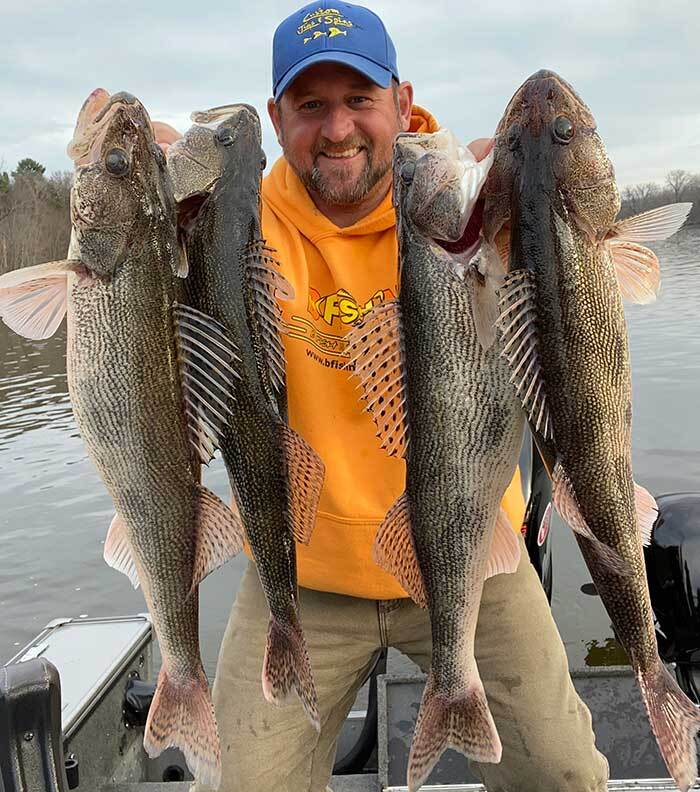Walleye and Pike Share These Hotspots Right Now!
Posted by Walt Matan, Chief Lure Designer, Custom Jigs & Spins and B-Fish-N Tackle on Oct 10th 2025
Posted by Walt Matan, Chief Lure Designer, Custom Jigs & Spins and B-Fish-N Tackle on Oct 10th 2025
Steep breaklines are a favorite spot for Fall walleye and pike to feed. These are areas where schools of bait will huddle up. Active gamefish travel along the break line, corralling that school and scarfing them down or spooking them up shallow where they slurp them up.
I’ll approach these fish with my one-two punch, which is dead sticking with rods in holders and casting jig-n-plastic presentations. Basically, dead sticking is baiting up, lowering down to the fish zone, and then setting your rod in the holder, waiting for a bite. When a fish bites, I like to open the bail, carefully take the rod out of the holder, close the bail, reel down until I feel the fish, and then SLAM the hook home.
These deep-water fish aren’t always aggressive. A precise presentation is needed; it’s not just lowering the jig and putting the rod in the holder. Sometimes these fish will hug the bottom, other times they might be suspended up a foot or more.
The lightest jig is usually the best choice. 1/8th, 3/16th, or ¼ ounce weights are usually the weights I use, unless it’s windy or I’m fishing deeper than 35 feet or the bait is so large that it won’t drop to the bottom (I guess I use a lot of different weights, LOL). BFishN Tackle makes a great jig that gets the job done. BFishN H20 Jigs come in a variety of colors, nine different weights, and have ultra-sharp hooks.

If the water is still above 60 degrees, I might try a half-crawler, but I usually use extra-large fatheads, small suckers, or blacktail chubs. Bigger is better, as I have caught some great walleyes and monster pike on ten- to twelve-inch-long chubs.
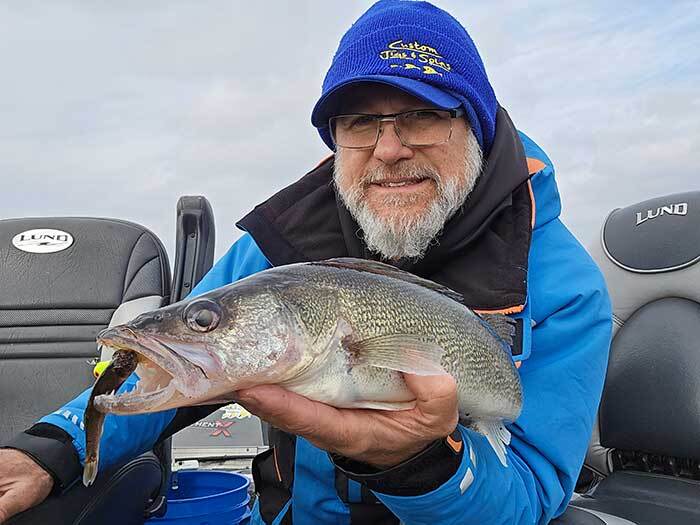
When using a bigger live bait like a chub, I’ll tie my own stinger number 10 hook long enough so that I can hook the treble behind the dorsal fin.
While the dead stick rod(s) sits in the holder, I’ll make casts up shallower with a jig-and-plastic combo. BFishN AuthentX Pulse-R’s, Moxi’s, and Ringworm’s are what I'll cast. A quarter-ounce jig is usually the right weight, but you might have to go heavier in windy conditions or if those fish want a faster-moving bait. You never know until you keep switching things up, and fish get caught.
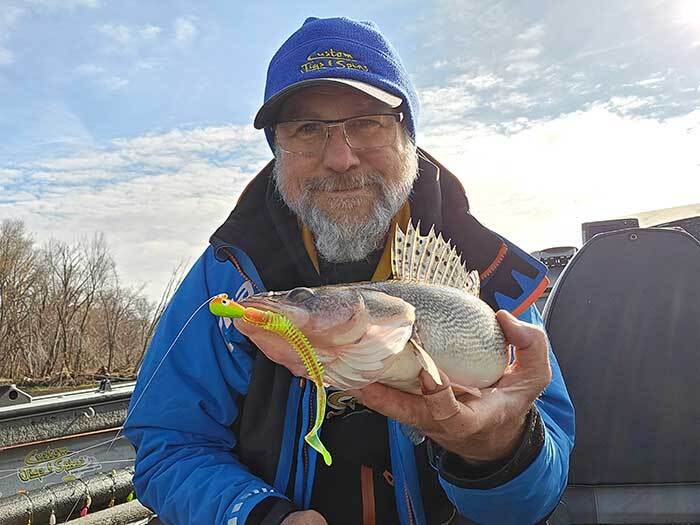
I’ll also use an underspin jighead with a willow blade and a K-5 Grub, Pulse-R, or Moxi as mentioned above. This can be worked a lot quicker to cover more water and entice aggressive fish. With the trolling motor set on spotlock, I’ll fan cast with the underspin/plastic and jig/plastic combos for about 15 minutes. If nothing happens, I’ll move on down the breakline in search of another sweet spot to stop, drop in the dead sticks, and cast around again.
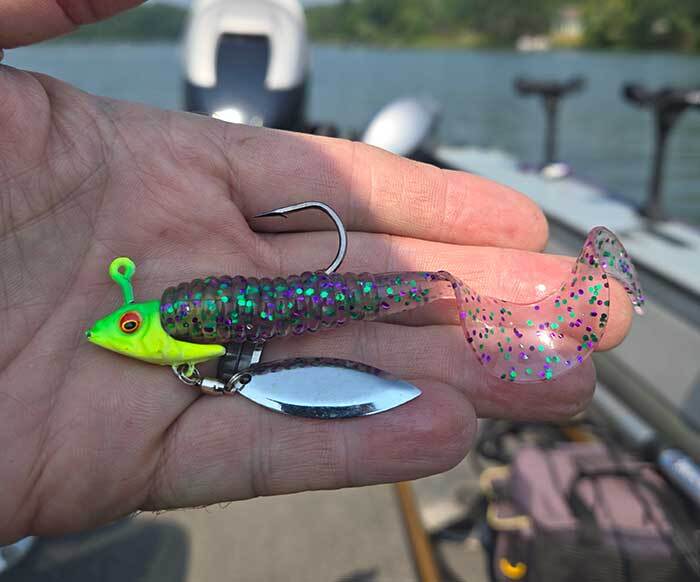
My tackle for these tactics is St. Croix Eyecon Walleye Rods. The St. Croix Eyecon Snapjig Rod is a great all-around rod for casting jig-and-plastic combos or sitting in a rod holder with a big chub. Add a SEVIIN GF2500 series spinning reel spooled up with 10-pound Hi-Vis green Power Pro line and a fluorocarbon leader, and you can handle these Fall trophy fish and have a fun fight to boot!
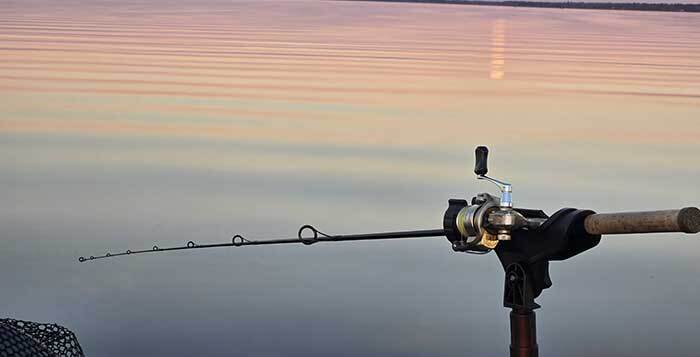
Experiment with color, jig weight, and plastic style. I like the Moxi best in the Fall since it has the largest tail and has some great action; it’s definitely a big walleye bait! That being said, the Pulse-R is the most popular of the three, with millions of walleyes caught by anglers. Finally, the Ringworm is definitely a walleye numbers style of plastic…if you can’t catch a walleye on a Ringworm, then they just aren’t biting!
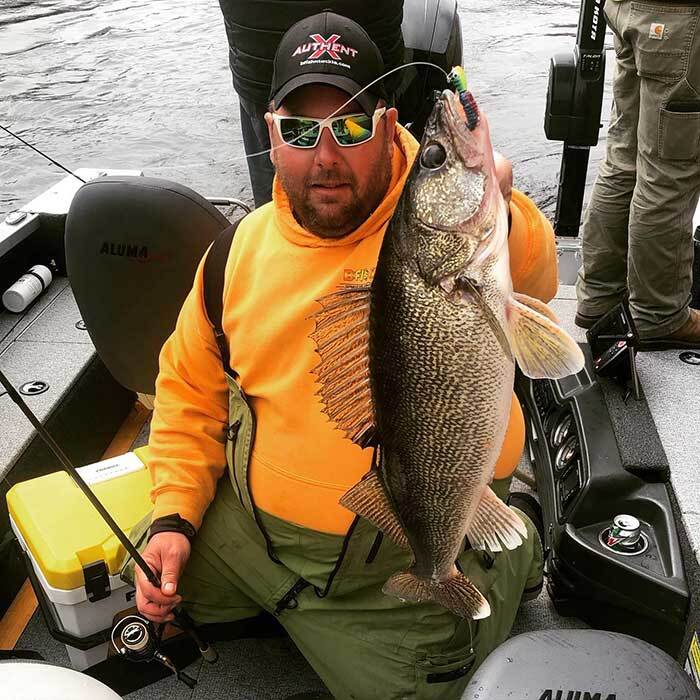
If you can get any action on the steep drop-offs, then it’s time to try shallow. It’s no secret that walleyes like rock piles and shallow rocky shores can be walleye and pike magnets. Many anglers seem to forget these spots in the Fall. On lakes that experience a turnover or deal with oxygen depletion, shallow rocky areas are a go-to, particularly when they are wind-blown. In fact, a good rule of thumb is that the most uncomfortable place to fish is usually the best place to fish.
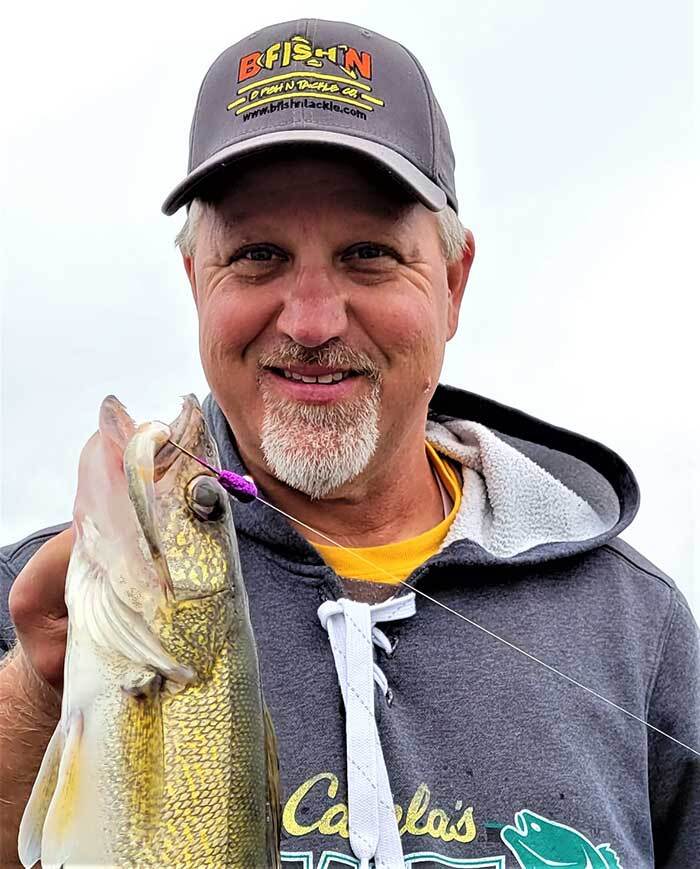
The BFishN Tackle Moxi collection includes a 4" Moxi and a 3" Moxi. Moxi’s have a much bigger body than standard Ringworms (the plastic design that most walleye anglers are familiar with), as well as a larger thumper tail. The 4" is for when the fish are really aggressive, and the 3" is for when they just want a snack.
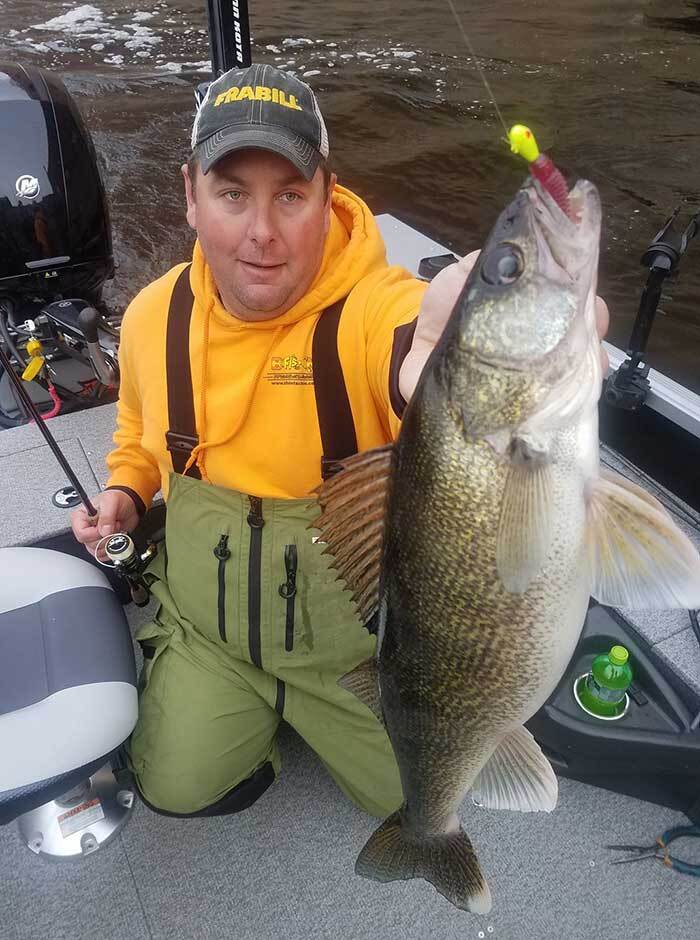
When it’s time to choose a jighead for a Moxi, you’ll want one that holds the Moxi tight to the head and doesn’t hang up in the rocks and other junk on the bottom. BFishN H20 jigs fit the bill nicely. Their wire “keeper” is molded into the jig's head and holds the plastic securely in place. You can add a touch of Super Glue to guarantee security. Once I caught three walleye, bang, bang, bang, on three casts without ever adjusting the bait!
H20 jigs come in a variety of weights (nine in total) and have a unique head design that hangs up less than your standard round ball jig head. As I mentioned earlier, jig weight makes all the difference in the action of the Moxi. Just enough is all you need. These H2O jigs come in nine different weight sizes, ranging from 1/16 to 5/8 ounce. Plus, the weight of each jig is stamped right on the head for easy selection. This is a big deal when setting up dead sticks...easy to find the same weight in different colors quickly.
In lakes, the walleye and pike will hold up on shallow gravel shorelines and gravel bars. Pitch the Moxi up shallow, let it fall back down, and pump the rod on the retrieve, again, try to keep it just off bottom. I have caught some great walleye in this often-overlooked area as well as some extra-large bonus pike!
